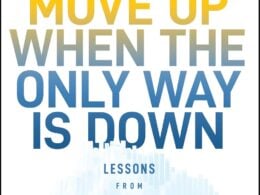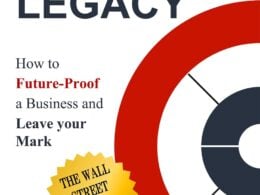Adapted from “Navigate the Swirl: 7 Crucial Conversations For Business Transformation” by Richard Hawkes. Copyright 2022 by Wiley.
What does “growth” mean? In business, the term is used in many different ways. Broadly speaking, it means the business is expanding and improving—perhaps in terms of revenue or profit, perhaps in its number of employees or customers, perhaps in its physical footprint, perhaps in its range of products or services, perhaps in its value as a company. All of these are metrics that businesses use to define and quantify growth. Growth can be slow and steady, or it can come in a sudden surge. Sometimes, if growth happens too fast, it proves to be unsustainable. As we’ve discussed, a business is more than its physical metrics, and if growth is to be sustained, it must become established in the social system. For an organization to grow and thrive, we must consider what “growth” means for that whole system, and how it can be skillfully led.
To take a simple analogy, think of the organization as a child. If you’re a parent, you want that child to grow up in the healthiest way possible—to progress in physical, emotional, and intellectual maturity. And most of us, whether we’re parents ourselves or not, have a sense of what a child needs at various points in the life cycle. We intuitively know that certain conditions are nurturing and supportive, whereas others might be destabilizing and even damaging. Of course, parenting is far from a perfect science, and growth is not a linear or simple process—it’s an interwoven, unfolding set of dynamics with all kinds of complexities involved. But the more a parent understands and recognizes those, the more they can guide, encourage, and support the child’s growth. In the same way, the leader of a growing company needs to understand the dynamics of organizational growth, the stages through which it passes, the different needs and challenges of each stage, the constraints it might encounter, and so on.
Most popular: 9 Essential Skills You Need to Start and Run a Successful Business
Growth in an organization—just like growth in a child—has a natural pathway and order. Don’t fight that flow. Part of the job of a leader is to understand it better, and in so doing find ways to support and encourage it. You don’t need to reengineer the child; you just need to give them optimal conditions, support, and protection. And one of the most important accelerators of growth is that simple awareness: when everyone in an organization, from the leader on down, begins to understand the dynamics of development and to think developmentally—about their own roles and about the organization as a whole.
Over the years, I’ve watched hundreds of organizations, large and small, navigate the journey of growth—from tech startups to national retail chains, from wealth management firms to healthcare systems. In many ways, each journey is unique—the people are different, the customers vary, the products and services are specific to each market. Some are public companies; some are private. Some are for-profit and some are non-profit. Some are complex enterprises with numerous business lines; others are streamlined specialists with a single offering. But as I observed, and participated in, these disparate journeys, what caught my attention were not the differences but the remarkable similarities. While many aspects of the growth journey are particular to the business involved, the overall trajectory is in fact quite consistent. If you step back from the details of each organization, the path they follow has the same general structure. It includes the same fundamental milestones; it encounters similar breakdowns and breakthroughs; and it leads to the same general destination. Indeed, amidst all of the tremendous variation in the business landscape, there is a game-changing truth that is easy to miss: The journey of organizational growth and scale passes through a series of stages that are common to every traveler.
Stop Doing These 4 Things if You Want Your Business to Last
Growth moves through stages
To help illustrate what I mean by “stages,” let’s continue with the childhood analogy—since it’s a journey that you’ve certainly experienced personally and may also have observed up close if you’re a parent. Every human baby embarks on a journey of growth and development—from infant to toddler to child to adolescent and finally to adulthood. Most people would agree that in this process, children pass through recognizable stages that they then outgrow, moving on to the next. Life stage transitions are not only predictable—they are predicted. This doesn’t mean all children are the same, or that they all move through the stages of maturation at the same speed. Indeed, any parent will tell you that no two children develop in exactly the same way, and that the ages at which they reach certain milestones like talking, walking, or puberty may differ quite widely, even within a family. But nevertheless, the stages through which they pass are clearly identifiable. They follow an inexorable developmental logic.
Just as a child is not simply a little adult, a startup is not just a smaller company than a global enterprise. It’s a less developed company.
This probably seems obvious to most, but it wasn’t always recognized clearly. In fact, before the early twentieth century, there was a general tendency to think of children as simply having less knowledge than adults. Their bodies were obviously growing and changing, but it wasn’t understood that their psychology, their ways of organizing reality, and their capacities to process their experiences were also developing. It was the pioneering psychologist James Mark Baldwin who first proposed, after observing his own daughter, that children pass through a specific series of developmental stages on their journey to adulthood. This idea was further advanced by the great developmental psychologist Jean Piaget, and today it’s become so widely accepted that many of us don’t even realize that human beings ever thought differently.
I’d suggest that this is as true when it comes to organizations as to people. Just as a child is not simply a little adult, a startup is not just a smaller company than a global enterprise. It’s a less developed company. And the journey from one to the other doesn’t just involve increasing headcount, square footage, assets, production levels, or revenue. It involves developing and maturing through a series of essential stages that are as predictable and consistent as infancy, toddlerhood, and adolescence. At each change, the organization must fundamentally reinvent how it sees itself, how it organizes itself, and how it interacts with its stakeholders.







